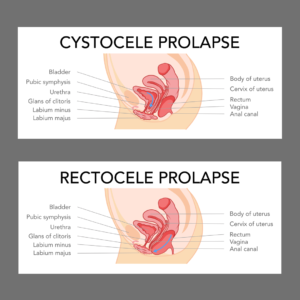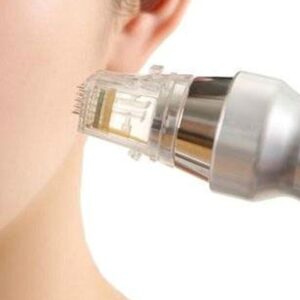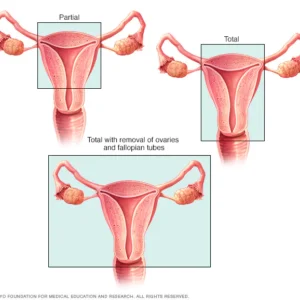Description
Familiarity with treatment
Labiaplasty majora, also known as labia majoraplasty, is a surgical procedure that aims to reduce the size or alter the shape of the labia majora, which are the outer folds of skin surrounding the vaginal opening. While the search results did not provide an extensive description of the procedure, here is a general overview based on the available information:
Surgical Techniques: There are different surgical techniques that can be used for labiaplasty majora, and the specific approach may vary depending on the patient’s individual situation and the surgeon’s expertise. Some common techniques include:
Fat Transfer: In this technique, a small amount of fat is harvested from another area of the body (such as the abdomen or thigh) through liposuction. The harvested fat is then injected into the labia majora to increase its volume and achieve the desired shape.
Tissue Excision: This technique involves removing excess tissue from the labia majora to reduce its size and create a more aesthetically pleasing appearance. The incisions are typically closed with absorbable stitches, and a surgical dressing is applied to the site.
Anesthesia: Labiaplasty majora can be performed under local anesthesia with oral sedation or general anesthesia, depending on the extent of tissue removal and the patient’s preference.
Recovery: After the procedure, it is normal to experience soreness, bruising, and swelling in the surgical area. The recovery period can vary, but it generally takes a couple of weeks for the initial healing. It may take several months for the swelling to fully subside. During the recovery period, it is important to follow your surgeon’s postoperative care instructions, which may include keeping the area clean, wearing loose underwear and clothing to prevent rubbing, avoiding sexual activity for a specified period, and refraining from physical activities for a few weeks.
Benefits: The benefits of labiaplasty majora can include a reduction in discomfort or pain caused by enlarged or hanging labia majora, improved symmetry and appearance of the outer genital area, and increased self-confidence.
Who is it suitable for?
Labiaplasty majora, or labia majoraplasty, is suitable for individuals who have concerns about the size, shape, or appearance of their labia majora. The decision to undergo labiaplasty majora is a personal one and should be made after careful consideration and consultation with a qualified plastic surgeon. Here are some factors that may make someone a suitable candidate for labiaplasty majora:
Discomfort or Pain: Some individuals may experience discomfort or pain due to enlarged or hanging labia majora. This can occur during physical activities, such as cycling or exercise, or even during everyday activities. Labiaplasty majora can help alleviate these symptoms and improve comfort.
Cosmetic Concerns: Individuals who are dissatisfied with the appearance of their labia majora may consider labiaplasty majora to achieve a more aesthetically pleasing result. It is important to note that labia come in a wide range of sizes and shapes, and what is considered normal and beautiful varies among individuals. It is essential to have realistic expectations and consult with a qualified plastic surgeon to discuss your specific concerns.
Labia Majora Volume: Some individuals may have naturally thin or deflated labia majora, which can affect the overall appearance of the genital area. Labiaplasty majora can involve adding volume to the labia majora using techniques such as fat transfer or hyaluronic acid injections.
Psychological Impact: For some individuals, the appearance of their labia majora may cause psychological distress or impact their self-esteem. In such cases, labiaplasty majora may be considered as a way to address these concerns and improve body image.
Who is it not suitable for?
Labiaplasty majora may not be suitable for everyone, and it is important to consult with a qualified plastic surgeon to determine if it is the right procedure for you. While the search results did not provide an extensive list of contraindications, here are some factors that may make someone not suitable for labiaplasty majora:
Medical Conditions: Certain medical conditions or factors may increase the risks associated with surgery or affect the healing process. It is important to discuss your medical history with your surgeon to determine if any underlying conditions may make you a poor candidate for the procedure.
Unrealistic Expectations: It is important to have realistic expectations about the outcomes of labiaplasty majora. The procedure can improve the appearance and address specific concerns, but it may not achieve perfection or completely change the appearance of the genital area. It is crucial to have a thorough discussion with your surgeon about your goals and expectations.
Psychological Considerations: Some individuals may have psychological concerns or body dysmorphia related to the appearance of their labia majora. In such cases, it is important to address these concerns with a mental health professional before considering surgery. A surgeon may recommend counseling or therapy to ensure that the decision to undergo labiaplasty majora is based on informed and healthy motivations.
Medical Evaluation: Before undergoing any surgical procedure, a comprehensive medical evaluation is typically conducted. This evaluation helps determine if you are in good health and fit for surgery. If any medical issues are identified during the evaluation, it may affect your suitability for the procedure.
Advantages
Labiaplasty majora, or labia majoraplasty, offers several potential advantages for individuals who are concerned about the size, shape, or appearance of their labia majora. While the search results did not provide an extensive list of advantages, here are some potential benefits mentioned:
Improved Symmetry: Labiaplasty majora can help improve the symmetry of the labia majora, making them more balanced and aesthetically pleasing.
Enhanced Comfort: For individuals who experience discomfort or pain due to enlarged or hanging labia majora, labiaplasty majora can provide relief and improve comfort during physical activities such as exercise or cycling.
Increased Self-Confidence: Labiaplasty majora can help address cosmetic concerns and improve body image, leading to increased self-confidence and improved quality of life.
Improved Sexual Satisfaction: Some individuals may experience enhanced sexual pleasure and satisfaction after labiaplasty majora, especially when combined with clitoral hood reductions. The procedure can remove excess tissue and improve the overall appearance of the genital area, potentially leading to increased confidence and comfort during sexual activity.
Correction of Congenital Defects or Abnormalities: Labiaplasty majora can address congenital defects or abnormalities of the labia majora, such as vaginal atresia or Mllerian agenesis, which can impact reproductive health and overall well-being.
Complications
Complications associated with labiaplasty majora are generally uncommon, but it is important to be aware of potential risks and complications. Here are some complications that have been mentioned in the search results:
Bleeding: Like any surgical procedure, labiaplasty majora can involve some bleeding. However, significant bleeding is rare. Your surgeon will take steps to minimize the risk of bleeding during and after the procedure.
Infection: Infection is a potential complication of any surgical procedure. Your surgeon will provide instructions on how to care for the surgical site and minimize the risk of infection. It is important to follow these instructions closely.
Scarring: Labiaplasty majora involves incisions, and scarring is a possibility. However, skilled surgeons take care to minimize visible scarring and place incisions in inconspicuous areas. Proper wound care and following postoperative instructions can also help reduce the risk of excessive scarring.
Asymmetry: Achieving perfect symmetry is challenging in any surgical procedure, including labiaplasty majora. Some degree of asymmetry may persist after the procedure. Skilled surgeons strive for balance and symmetry but it is important to have realistic expectations.
Poor Wound Healing: In rare cases, poor wound healing may occur, leading to delayed healing or wound breakdown. Following proper wound care instructions and avoiding activities that may strain the surgical site can help minimize this risk.
Undercorrection or Overcorrection: Achieving the desired aesthetic outcome can be challenging, and there is a possibility of undercorrection (insufficient reduction) or overcorrection (excessive reduction). Skilled surgeons aim for a balanced and natural appearance while addressing the patient’s concerns.
Changes in Sensation: Labiaplasty majora may potentially affect sensation in the surgical area. Some individuals may experience temporary or permanent changes in sensation, including increased or decreased sensitivity. It is important to discuss this potential risk with your surgeon.
preoperative care
Preoperative care for labiaplasty majora involves several important steps to ensure a safe and successful procedure. While the search results did not provide an extensive list of preoperative care instructions, here are some general considerations:
Consultation: The first step is to schedule a consultation with a qualified plastic surgeon who specializes in aesthetic genital plastic surgery. During this consultation, you will discuss your concerns, goals, and expectations. The surgeon will evaluate your individual case, provide personalized recommendations, and explain the procedure in detail.
Medical Evaluation: Before undergoing any surgical procedure, a comprehensive medical evaluation is typically conducted. This evaluation helps determine if you are in good health and fit for surgery. Your surgeon will review your medical history, perform a physical examination, and may request additional tests or consultations with other specialists if necessary.
Discussion of Surgical Approach: Your surgeon will discuss the various surgical approaches available for labiaplasty majora and help you choose the best option based on your goals and concerns. These approaches may include fat transfer, tissue excision, or other techniques. The surgeon will explain the benefits, risks, and expected outcomes of each approach.
Preoperative Instructions: Your surgeon will provide specific preoperative instructions to follow in the days leading up to your surgery. These instructions may include guidelines on medications to avoid, fasting requirements before surgery, and any necessary preparations for anesthesia.
Smoking and Medication: It is important to inform your surgeon about any medications, supplements, or herbal remedies you are taking, as some may need to be temporarily discontinued before surgery. Smoking can also interfere with the healing process, so your surgeon may advise you to quit smoking or avoid it for a certain period before and after the procedure.
Arrangements for Recovery: Labiaplasty majora is typically performed on an outpatient basis, but it is important to make arrangements for your recovery period. This may include arranging for someone to drive you home after the procedure, ensuring you have a comfortable recovery space, and planning for time off work or other responsibilities.
Postoperative care
Postoperative care following labiaplasty majora is crucial for proper healing and minimizing the risk of complications. While there is no standard postoperative care regimen mentioned in the search results, here are some general considerations:
Follow Surgeon’s Instructions: It is essential to carefully follow the postoperative instructions provided by your surgeon. These instructions may include guidelines on wound care, hygiene, activity restrictions, and medication management. Adhering to these instructions will help promote proper healing and minimize the risk of complications.
Wound Care: Your surgeon will provide specific instructions on how to care for the surgical site. This may include keeping the area clean and dry, using prescribed ointments or dressings, and avoiding activities that may strain the surgical site. It is important to avoid any excessive pulling or friction on the surgical area during the healing process.
Pain Management: Your surgeon may prescribe pain medication to manage any discomfort or pain during the initial recovery period. It is important to take the medication as directed and report any severe or persistent pain to your surgeon.
Swelling and Bruising: Swelling and bruising are common after labiaplasty majora. Your surgeon may recommend using cold compresses or ice packs to help reduce swelling. It is important to avoid applying ice directly to the surgical site and follow your surgeon’s instructions on the duration and frequency of cold compress use.
Activity Restrictions: Your surgeon will provide guidelines on activity restrictions during the recovery period. It is important to avoid strenuous activities, heavy lifting, and sexual intercourse for the recommended period specified by your surgeon. Gradually reintroduce physical activities as advised by your surgeon.
Follow-up Appointments: Your surgeon will schedule follow-up appointments to monitor your healing progress. These appointments are essential for assessing the surgical site, removing any sutures if necessary, and addressing any concerns or questions you may have.
Patience and Rest: It is important to allow yourself time to rest and recover following labiaplasty majora. Give your body the opportunity to heal properly by avoiding excessive physical exertion and getting adequate rest.







Reviews
There are no reviews yet.